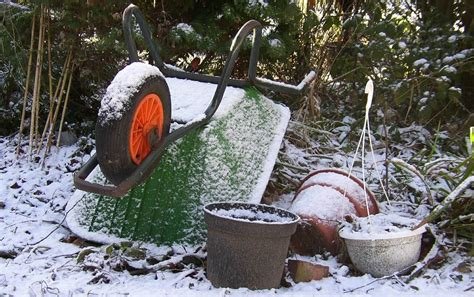How to Prepare Your Garden for Winter: Decoration and Maintenance Tips
As the vibrant colors of autumn fade away, it’s time to start thinking about preparing your garden for the cold winter months ahead. From clearing out dead plants and debris to protecting sensitive plants from frost, there are several steps you can take to ensure that your garden remains healthy and vibrant throughout the winter. In this blog post, we will explore various decoration and maintenance tips to help you get your garden ready for winter. We will discuss the importance of clearing out dead plants and debris, protecting sensitive plants from frost, insulating garden beds, creating a winter wonderland with outdoor decorations, pruning and trimming trees and shrubs, and preventing winter damage with proper maintenance. By following these simple tips, you can ensure that your garden remains beautiful and thriving even during the coldest months of the year.
Clearing out dead plants and debris
As the winter season approaches, it’s important to take some time to clear out any dead plants and debris from your garden. Not only does this help create a clean and tidy space, but it also prevents the spread of diseases and pests that may have taken hold in the decaying plant material.
Start by removing any dead annuals and vegetables from your garden beds, and dispose of them in the compost or green waste bin. Pull up any dead plants that are still in the ground, and clear away any fallen leaves and branches. This will not only improve the overall appearance of your garden but also help prepare it for the winter season.
Another important step is to trim back any dead or diseased branches from your trees and shrubs. This will help prevent the spread of diseases and ensure that your plants remain healthy throughout the winter months. For larger trees, it may be necessary to hire a professional to safely trim back any dead branches.
By taking the time to clear out dead plants and debris from your garden, you’re not only improving its appearance but also setting the stage for healthy growth in the upcoming spring season.
Protecting sensitive plants from frost
As the temperatures drop and winter approaches, it’s important to take steps to protect sensitive plants from frost. Frost can cause damage to delicate plants, especially those that are not suited for cold weather. There are several methods that can be used to shield sensitive plants from frost and ensure they survive the winter season.
One way to protect sensitive plants from frost is by covering them with a cloth or blanket. This barrier can help to trap heat and prevent frost from reaching the plants. It’s important to choose a cover that is breathable to avoid moisture buildup, which can also cause damage to the plants.
Another method is to use a layer of mulch around the base of the plants. Mulch acts as insulation, helping to regulate the soil temperature and protect the roots of the plants. This can be particularly beneficial for sensitive plants that are vulnerable to frost damage.
Additionally, bringing sensitive plants indoors during particularly cold nights can provide them with extra protection. This can be done by placing them in a sheltered area or using a greenhouse to shield them from the cold temperatures and frost.
Insulating garden beds for winter
As the winter season approaches, it is important to take steps to ensure that your garden beds are protected from the harsh cold. Insulating your garden beds for winter is essential to protect the roots of your plants and give them a better chance of surviving the cold weather.
This can be achieved by adding a layer of mulch to your garden beds. Mulch acts as a natural insulator, keeping the soil temperature more stable and protecting the roots of your plants from extreme cold. It also helps to maintain moisture in the soil, which is important during the winter months.
In addition to mulch, you can also use row covers or cloches to provide extra protection to delicate plants. These coverings can shield your plants from frost, wind, and snow, creating a warmer microclimate for your garden beds.
Lastly, consider planting hardy winter crops that can withstand the cold temperatures. These plants can help to protect your garden beds by providing extra insulation and preventing erosion of the soil during the winter months.
Creating a winter wonderland with outdoor decorations
As the winter season approaches, many people are eager to transform their outdoor spaces into a beautiful and festive winter wonderland. One of the best ways to achieve this is by incorporating outdoor decorations that capture the magic of the season.
One popular option for creating a winter wonderland is by using string lights to illuminate the exterior of your home. Whether you opt for classic white lights or colorful LED options, string lights can instantly add a touch of whimsy and warmth to any outdoor space.
In addition to string lights, consider adding festive wreaths and garlands to your outdoor decor. These traditional holiday accents can be displayed on doors, windows, and fences to create a charming and inviting atmosphere. Look for wreaths and garlands adorned with pinecones, berries, and ribbons for a cozy winter vibe.
Another way to create a winter wonderland is by incorporating outdoor inflatables into your decor. From playful snowmen and reindeer to twinkling snow globes, outdoor inflatables can add a larger-than-life element to your outdoor space and delight visitors of all ages.
Pruning and trimming trees and shrubs
When winter comes around, it’s important to take care of your trees and shrubs to ensure they stay healthy and strong for the next growing season. Pruning and trimming are essential tasks that help shape the growth of your plants and remove any dead or diseased branches.
One important aspect of pruning and trimming is to do it at the right time. Late winter or early spring is generally the best time to prune most trees and shrubs, as they are dormant and less vulnerable to damage. It’s crucial to avoid pruning too early, as it may encourage new growth that can be damaged by late frost.
When it comes to the actual pruning process, it’s important to use the right tools and techniques. Sharp, clean pruning shears and loppers are essential for making clean cuts that promote faster healing. Additionally, it’s important to avoid removing too much foliage at once, as this can put unnecessary stress on the plant.
In addition to pruning, it’s also important to consider trimming any overgrown or unruly branches. Trimming helps to maintain the shape and size of your trees and shrubs, and can also prevent them from becoming too dense, which can lead to disease and pest issues.
Preventing winter damage with proper maintenance
One of the most important aspects of winter garden care is preventing damage from harsh weather conditions. By taking the time to properly maintain your garden, you can protect your plants and ensure they thrive come springtime.
Start by clearing out dead plants and debris from your garden. This helps to prevent the spread of disease and allows for better air circulation around your plants. Next, focus on protecting sensitive plants from frost by covering them with a frost cloth or bringing them indoors during particularly cold nights.
It’s also important to insulate garden beds for winter by adding a layer of mulch or compost to protect plant roots from freezing temperatures. Consider pruning and trimming trees and shrubs to remove any dead or diseased branches that could potentially cause damage during winter storms.
Finally, consider creating a winter wonderland with outdoor decorations that can brighten up your garden during the winter months. By following these steps and preventing winter damage with proper maintenance, you can ensure your garden stays healthy and vibrant all year long.
Frequently Asked Questions
What are some tasks for preparing a garden for winter?
Tasks include clearing out dead plants and debris, protecting sensitive plants from frost, insulating garden beds for winter, creating a winter wonderland with outdoor decorations, pruning and trimming trees and shrubs, and preventing winter damage with proper maintenance.
How can I clear out dead plants and debris in my garden for winter?
You can clear out dead plants and debris by removing any dead annuals, cutting back perennials, and raking and disposing of fallen leaves and branches.
What are some ways to protect sensitive plants from frost in the winter?
To protect sensitive plants from frost, you can cover them with blankets or burlap, use frost cloth, or bring potted plants indoors. You can also add mulch to insulate the soil around the plants.
How can I insulate my garden beds for winter?
You can insulate garden beds for winter by adding a layer of mulch, covering them with an insulating fabric or plastic, or building a cold frame or hoop house to protect the plants from the cold.
What are some ideas for creating a winter wonderland with outdoor decorations in the garden?
You can create a winter wonderland with outdoor decorations by adding string lights, festive garlands, ornaments, and wreaths. You can also incorporate winter-friendly plants like evergreens and berries into your decorations.
When should I prune and trim trees and shrubs for winter?
It’s best to prune and trim trees and shrubs in late fall or early winter, after the leaves have fallen and before the coldest weather sets in. This can help prevent winter damage and promote healthy growth in the spring.
What are some tips for preventing winter damage with proper maintenance in the garden?
You can prevent winter damage with proper maintenance by keeping up with watering, checking for pests and diseases, and repairing any damaged structures or fencing. It’s also important to clean and maintain garden tools and equipment for the next season.






